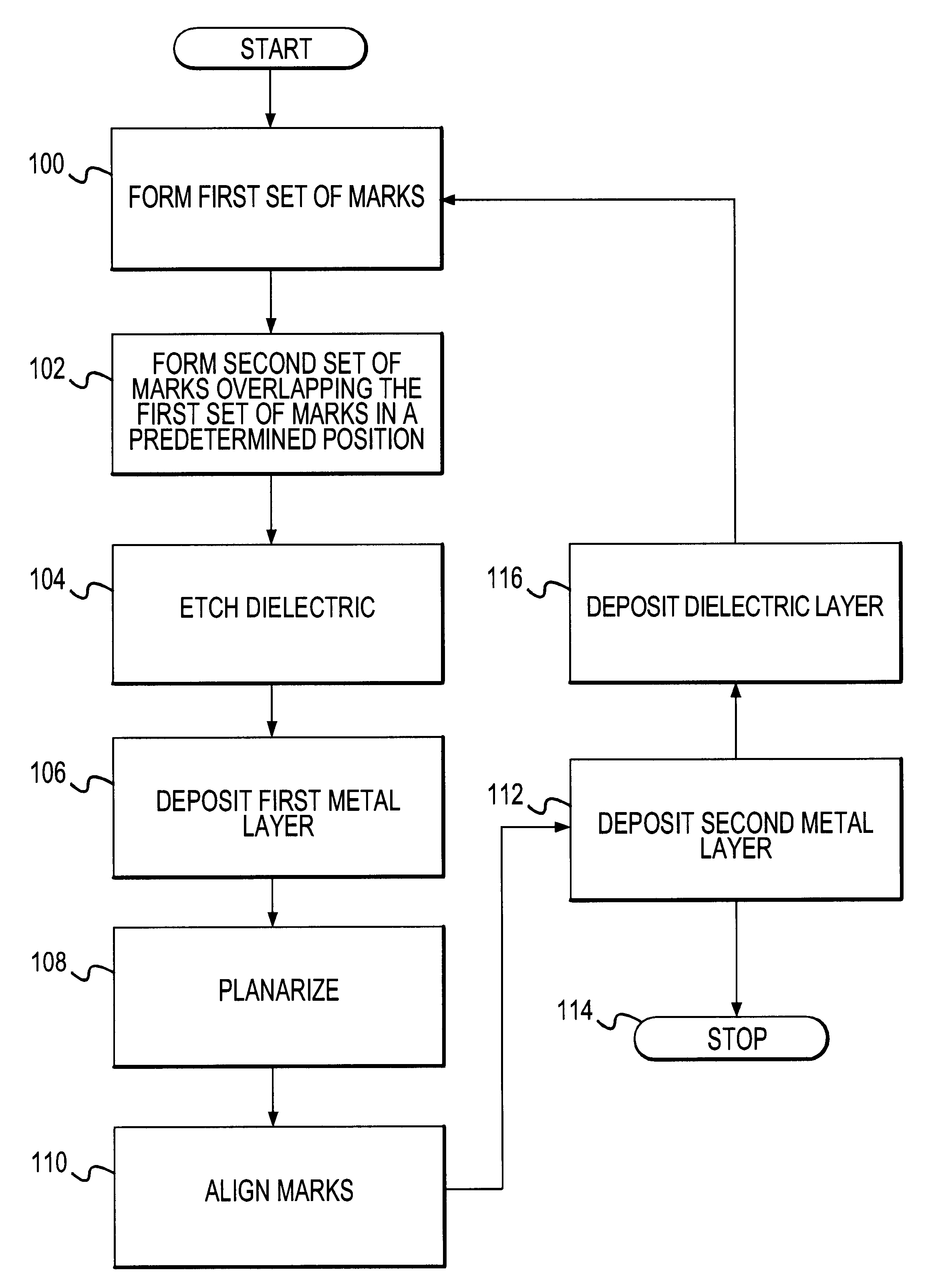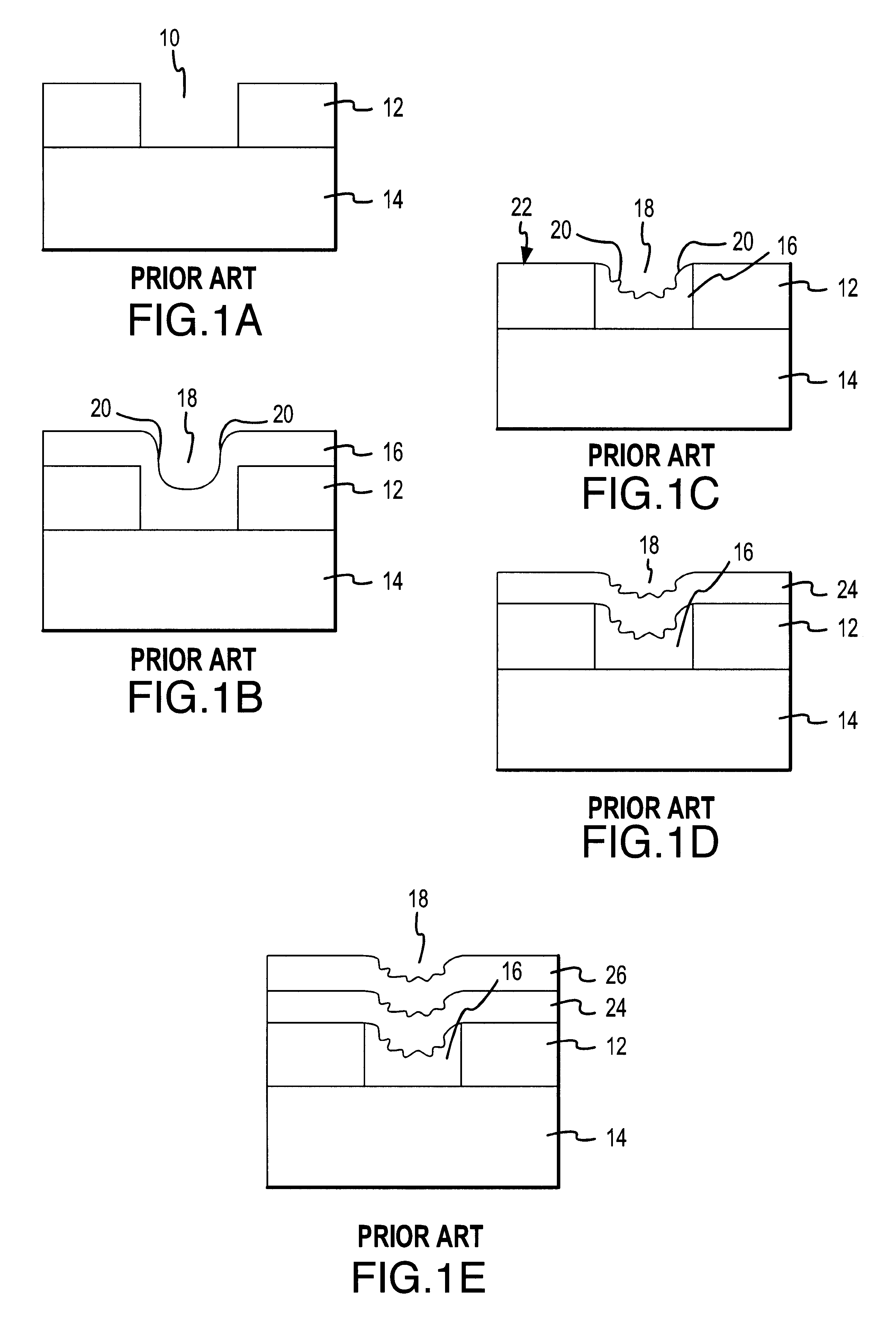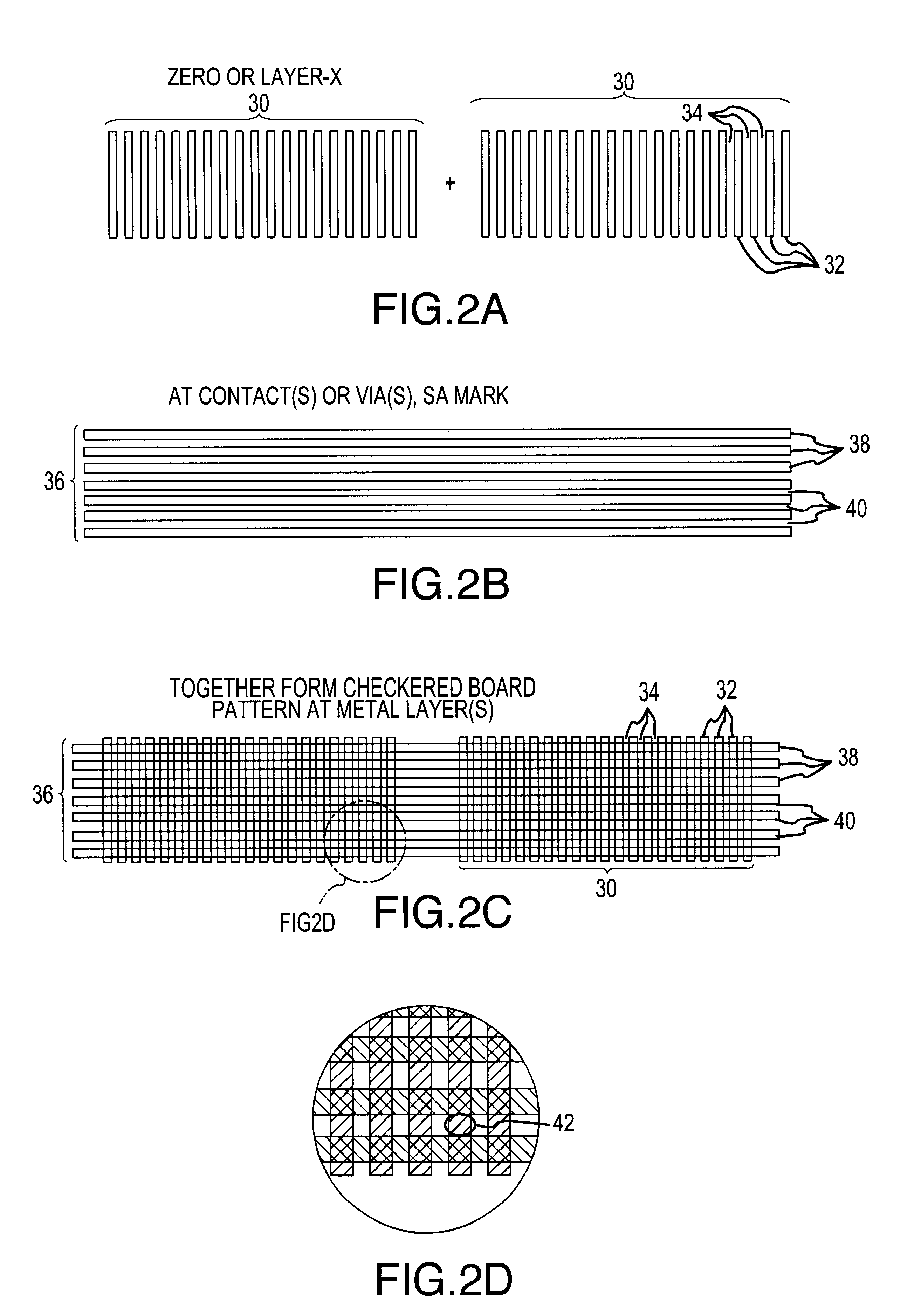Method for creating and preserving alignment marks for aligning mask layers in integrated circuit manufacture
a technology of integrated circuits and alignment marks, which is applied in the direction of instruments, semiconductor devices, photomechanical treatment, etc., can solve the problems of increasing costs, increasing costs, and requiring additional equipmen
- Summary
- Abstract
- Description
- Claims
- Application Information
AI Technical Summary
Benefits of technology
Problems solved by technology
Method used
Image
Examples
Embodiment Construction
The present invention may be described herein in terms of various processing steps. It should be appreciated by those skilled in the art that such processing steps may be realized by any number and combination of various conventional techniques and equipment for carrying out those techniques. It should also be appreciated that the particular implementations and process steps shown and described herein are illustrative of the invention and its best mode, and are not intended to otherwise limit the scope of the present invention in any way.
FIGS. 1A-1E refer to various stages in the prior art creation of an alignment mark used with conventional chemical mechanical processing (CMP). For example, as illustrated in FIG. 1A, a trench 10 is etched in a dielectric layer 12 which has been deposited on the surface of a wafer substrate 14, such as silicon. The trench 10 serves as a mold for an alignment mark. In FIG. 1B, a first metal layer 16, such as tungsten, for example, is conformably depo...
PUM
| Property | Measurement | Unit |
|---|---|---|
| dimensions | aaaaa | aaaaa |
| size | aaaaa | aaaaa |
| energy | aaaaa | aaaaa |
Abstract
Description
Claims
Application Information
 Login to View More
Login to View More - R&D
- Intellectual Property
- Life Sciences
- Materials
- Tech Scout
- Unparalleled Data Quality
- Higher Quality Content
- 60% Fewer Hallucinations
Browse by: Latest US Patents, China's latest patents, Technical Efficacy Thesaurus, Application Domain, Technology Topic, Popular Technical Reports.
© 2025 PatSnap. All rights reserved.Legal|Privacy policy|Modern Slavery Act Transparency Statement|Sitemap|About US| Contact US: help@patsnap.com



